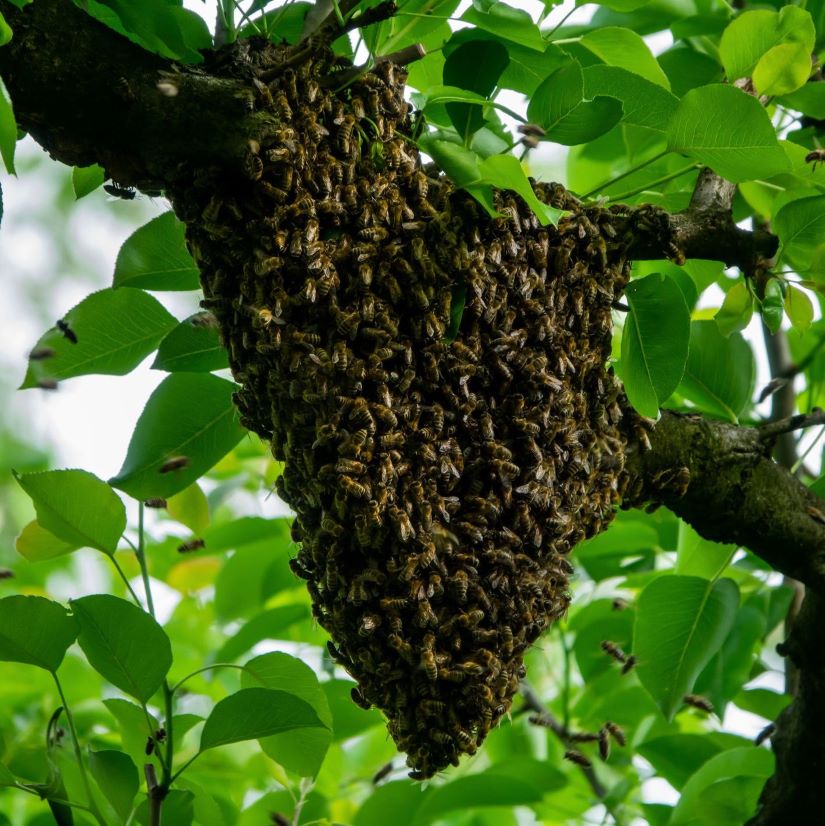
The arrival of spring not only brings vibrant blossoms and the promised warmth of summer but also marks the start of bee swarm season. While the sight of a bee swarm often invokes fear, these natural phenomena are a crucial part of bee life cycles and play a significant role in the health of our environment. Here, we’ll break down what to expect from a bee swarm, how to respond if one crosses your path, and the positive steps you can take to ensure these vital pollinators thrive.
Bee Swarms: A Sign of New Beginnings
Bees swarm when a colony grows too large for their current hive. It doesn’t symbolize aggression or an attack, but a peaceful process of propagation and a sign that the current queen has split her colony to establish a new one. Swarms often occur in the spring as a way for the species to grow and evolve, making them a promising sight for struggling bee populations. Each swarm has a mission to find a new home that is safe and offers the resources necessary for the survival of the new colony.
What To Do When You Encounter a Swarm
Encountering a bee swarm can be a formidable sight, but it doesn’t have to be a dangerous one. Here are some essential steps to take if you spot a swarm:
- Keep Your Distance: Swarming bees, while generally non-aggressive, are highly protective of their queen. Movement and vibrations can agitate them, making it crucial to remain still and calm if you’re near a swarm.
- Alert Others: If a swarm is near a public area, it’s important to alert others to their presence and ensure they don’t disturb the bees. This can be as simple as placing a sign nearby to warn passersby.
- Contact a Beekeeper: The best way to manage a bee swarm is to contact a local beekeeper who can safely and humanely relocate the bees. Many beekeepers are on call during swarm season and will quickly respond to your location to guide the process.
Swarm Life Cycle: From Street Corner to Sweet Home
Once a beekeeper is called, they will typically assess the swarm to gauge its size and the best way to collect it. There are various methods for collecting swarms, but the goal is always to safely move the bees into a desirable location, such as a hive. After they’ve been collected, the beekeeper will often introduce the swarm to a new hive on their property, providing all the elements for a thriving bee community.
Protect Our Pollinators: Why Swarms Are A Vital Part of Our Ecosystem
The decline in global bee populations is a well-documented concern with significant implications for our ecosystem’s health. Swarms help repopulate bees and contribute to genetic diversity, making hives more resistant to diseases and pests. By understanding and appreciating the role of swarms, we can shift the narrative surrounding these gatherings from one of fear to a celebration of the bees’ resilience and vitality.
Swarm season serves as a powerful reminder of the interconnectedness of all life and our responsibility to protect the creatures that help maintain the balance of our natural world. If you see a bee swarm this spring, remember the positive steps you can take to ensure the safety and vitality of these essential pollinators. Your Oasis Outdoor Care understands and respects the vital nature of our bee populations. We hope this blog helps take the fear out of seeing a bee swarm and gives you appropriate action steps to take to protect the bees until help arrives.




